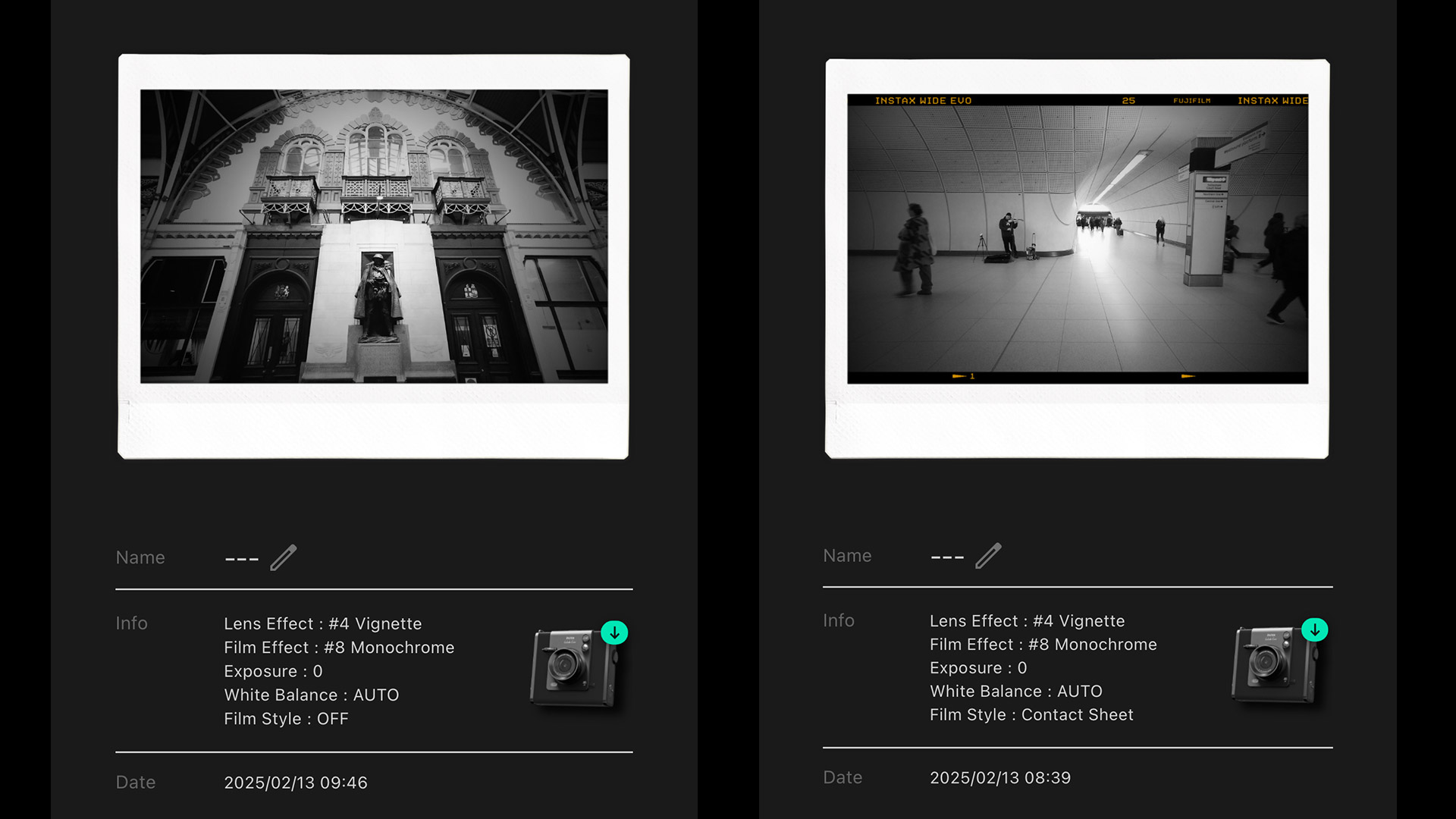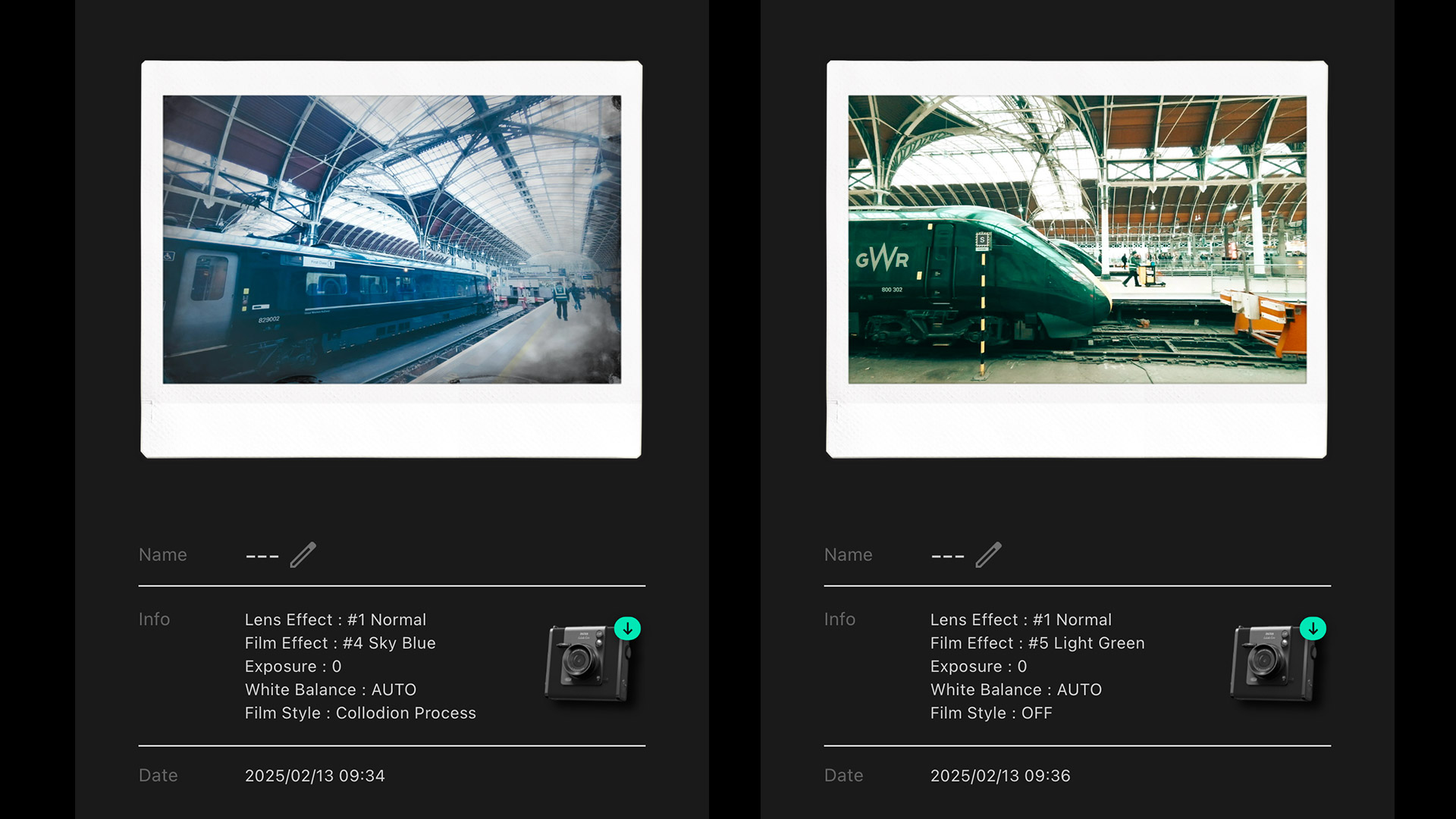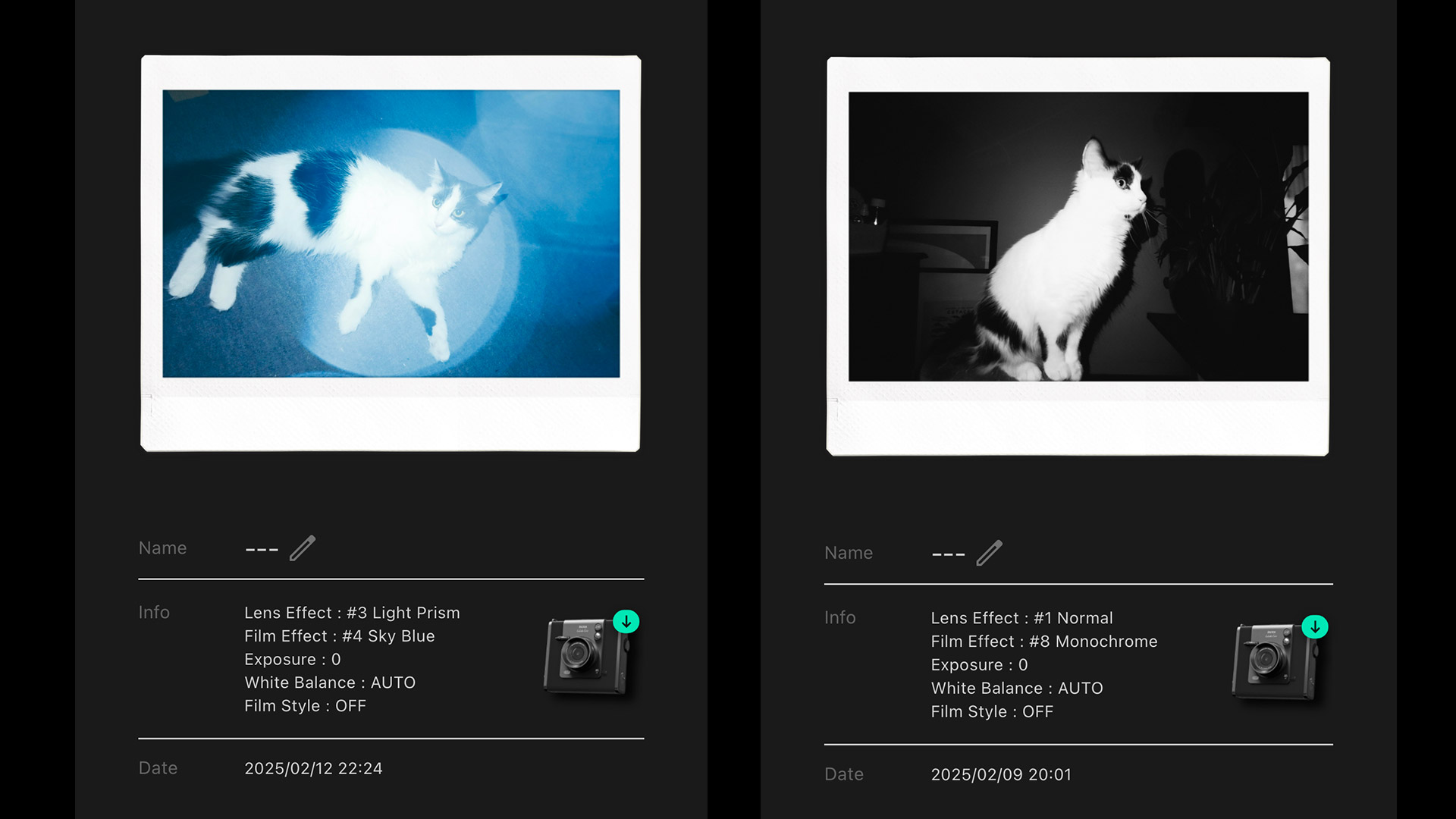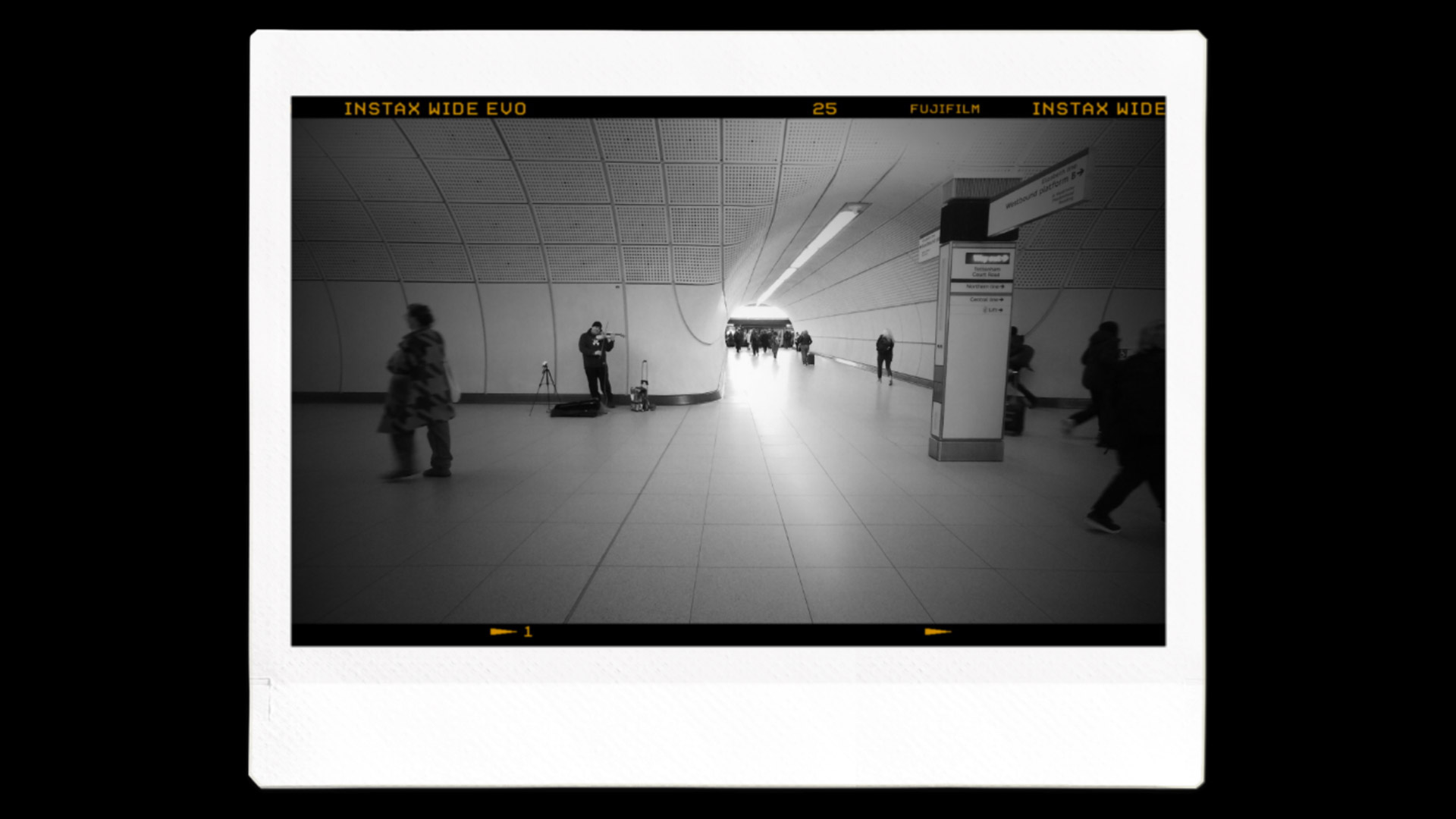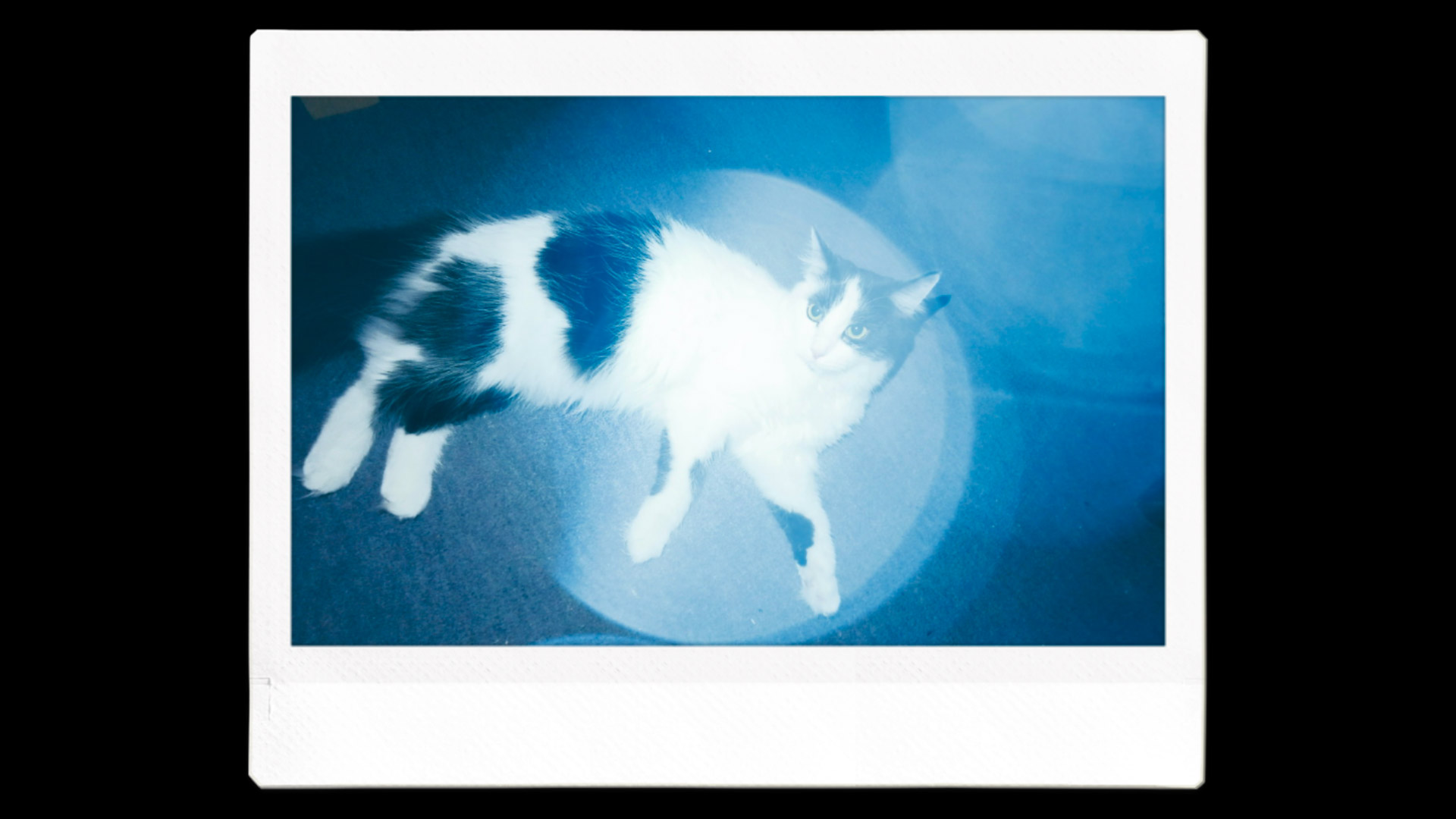Why you can trust TechRadar
We dedicate significant time to testing each product or service we review, ensuring you are purchasing the best option. Discover more about our testing process.
Fujifilm Instax Wide Evo: Two-minute review
The Fujifilm Instax Wide Evo captures attention with its vintage look and wide body design. If you’re looking for an exceptional instant camera for hybrid photography (which enables you to print photos taken directly or sent from your smartphone) and prefer wide format prints, this could be the perfect choice for you.
While it’s on the pricier side, the Instax Wide Evo is an upgrade from Fujifilm’s previous hybrid model, the Mini Evo, which launched in 2021. It retains many beloved features like an LCD screen, 10 lens options, and 10 film effects that create 100 unique creative combinations. There are also some exciting new features that I’ll detail below.
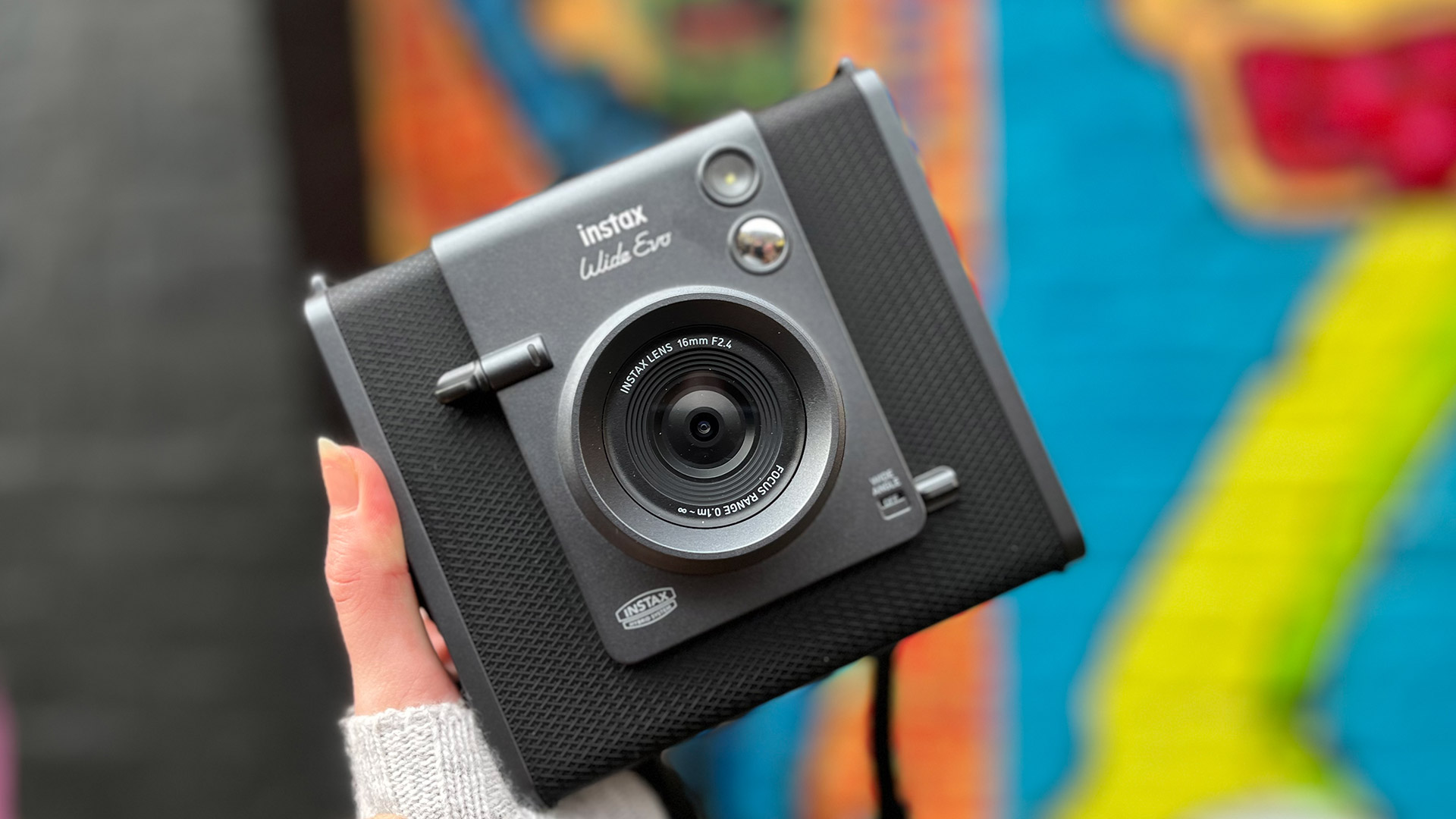
The wider film print means that this instant camera is somewhat larger, but it utilizes the additional space by incorporating more physical buttons for quick setting adjustments. These include a designated wide-angle button that allows you to switch to a more standard field of view (FoV) when you prefer not to have that cinematic effect.
Moreover, you can cycle through six unique film styles using a button on the camera’s top, one of which adds black bars for an IMAX-like experience. There’s also a dial on the left for the 10 lens effects and another on the right to switch between the 10 film effects. My favorite feature is the crank that allows you to print a photo manually, reminiscent of traditional film camera mechanisms.
The camera scores a perfect five stars for its extensive creative photo editing features. However, what about the image quality of the Instax Evo Wide? It doesn’t quite match the richness or dynamism of an analog instant camera’s output. The physical prints are comparable to the quality from a smartphone camera, and digital copies do not stand up against those taken with a smartphone.
The Instax Evo Wide won’t replace your dedicated digital camera – nor is it ideal if you cherish the ‘magic’ of traditional analog instant film cameras, as your images will always be digital at first. Nonetheless, it serves as a fantastic addition for those wishing to explore their photography with a wider view.
Fujifilm Instax Wide Evo: Price and availability

(Image credit: Future)
The Fujifilm Instax Wide Evo was released on January 21, 2025, priced at $349.95 / £319.99 / AU$599.
This makes the Fujifilm Instax Wide Evo one of the most expensive instant cameras, according to TechRadar’s cameras editor, Timothy Coleman. For comparison, the only other Instax camera that produces wide-format instant prints is the Instax Wide 400, which costs $149.99 / £129.99 / AU$229.99.
Additionally, the Wide Evo is almost twice the price of Fujifilm’s other hybrid model, the Mini Evo, retailing at $199.99 / £174.99 / AU$299.99. Does the extra cost reflect the premium features of this upgraded model? As Fujifilm’s first wide format hybrid camera (and second overall), the Wide Evo offers a high-end package, though it may not offer great value.
Optional accessories for the Evo Wide are available, such as a leather case priced at $49.95 in the US and £37.99 in the UK. Although these are optional, investing in one might be wise to protect the LCD display, which, if scratched, could hinder your ability to see and take photos.
Fujifilm Instax Wide Evo: Specs
Film Type: | Fujifilm Instax Wide film |
Print size: | 62mm x 99mm |
Focus range: | f = 16 mm (35 mm equivalent) |
Aperture: | f 2.4 |
Shutter Speed | Automatic switching, 1/4 to 1/8,000 seconds |
Power: | Internal lithium ion rechargeable |
Charging time: | 2–3 hours |
Dimensions: | 138.7 mm x 125 mm x 62.8 mm (not including protruding parts) |
Weight: | 490g |
Fujifilm Instax Wide Evo: Design
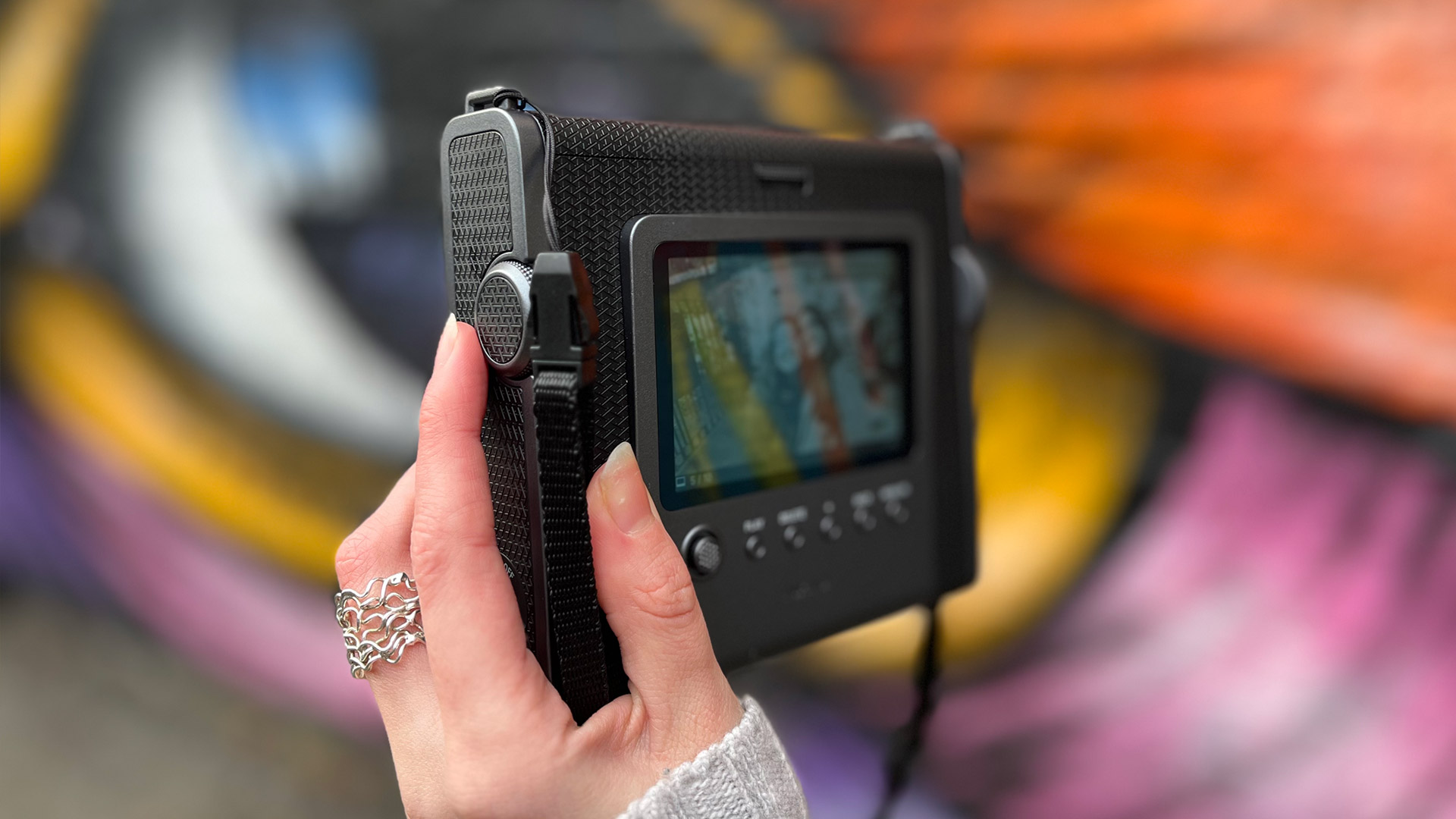
(Image credit: Future)
- A hybrid instant camera that allows direct printing or printing from a micro SD card.
- Numerous dials and switches for choosing different film effects.
- Equipped with a mirror and button for selfies.
When rumors emerged about the Instax Wide Evo, it was said to be the “most aesthetically pleasing Instax camera ever created,” capturing the interest of many enthusiasts, including TechRadar’s senior news editor Mark Wilson, who remarked that the “Instax Wide Evo sounded like the ideal instant camera.”
With the camera now available, we can confirm that it’s a gorgeous gadget. Its slim design balances its wide structure, making the Instax Wide Evo one of the larger options available. It boasts an elegant retro appearance, reminiscent of classic cameras with textured black bodies and silver lenses.
As the only other wide-format Instax camera available is the bulky Instax Wide 400, the Wide Evo’s stylish textured black design is definitely more appealing than its larger counterpart, which features a tacky dull green finish. (If you’re looking for another wide-format option, the Lomo’Instant Wide Glass set to release in 2024 is a charming instant camera we rated 4.5 stars in our thorough review.) It’s unlikely anyone would mind carrying the Wide Evo throughout the day.

(Image credit: Future)
The optional leather case for the Wide Evo makes carrying it easier and helps protect it from scratches and dings, ensuring a longer lifespan since the LCD screen is prone to scuffs, especially since this camera does not feature a viewfinder. While I can’t confirm if this will be a concern, it’s something to consider.
Moreover, the Wide Evo is light—roughly half a kilogram—making it quite portable, but don’t expect to slide it into a pocket. Due to its design for wide-format instant prints, it is larger than most cameras.
Fujifilm Instax Wide Evo: Performance
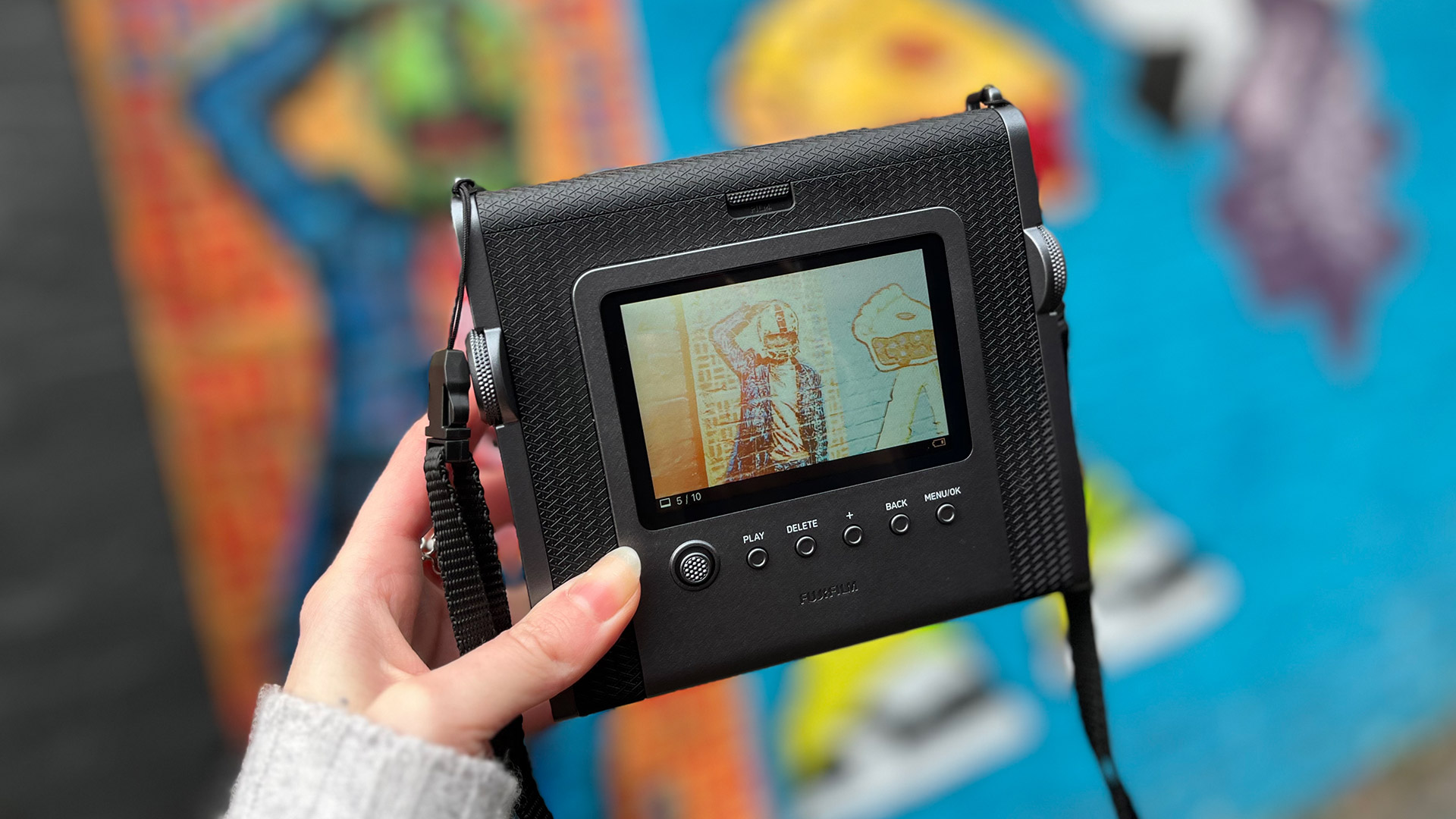
Captured using warm film effects and color shift lens settings.(Image credit: Future)
- Ample opportunities to experiment with 100 creative combinations
- The broadest Instax lens and wide-format prints provide extra space for your subjects
The Fujifilm Instax Wide Evo offers a variety of built-in film and lens effects, making it easy to try out different styles. With the ability to create 100 unique combinations, there’s plenty of scope for creativity.
The Instax Wide Evo emphasizes customization, allowing users to modify images with various effects such as lens flares, borders, and color filters, making it ideal for those who enjoy experimentation.
The camera’s design simplifies the process of making photo editing changes. Each effect has dedicated dial buttons on the side. Notably, the most prominent button at the top, typically for the shutter, is instead for applying diverse film styles to images.
It also features a button on the front to disable the wide-angle, enhancing its hybrid capabilities. Additionally, the lens itself can be twisted to alter the intensity of filters and film effects.
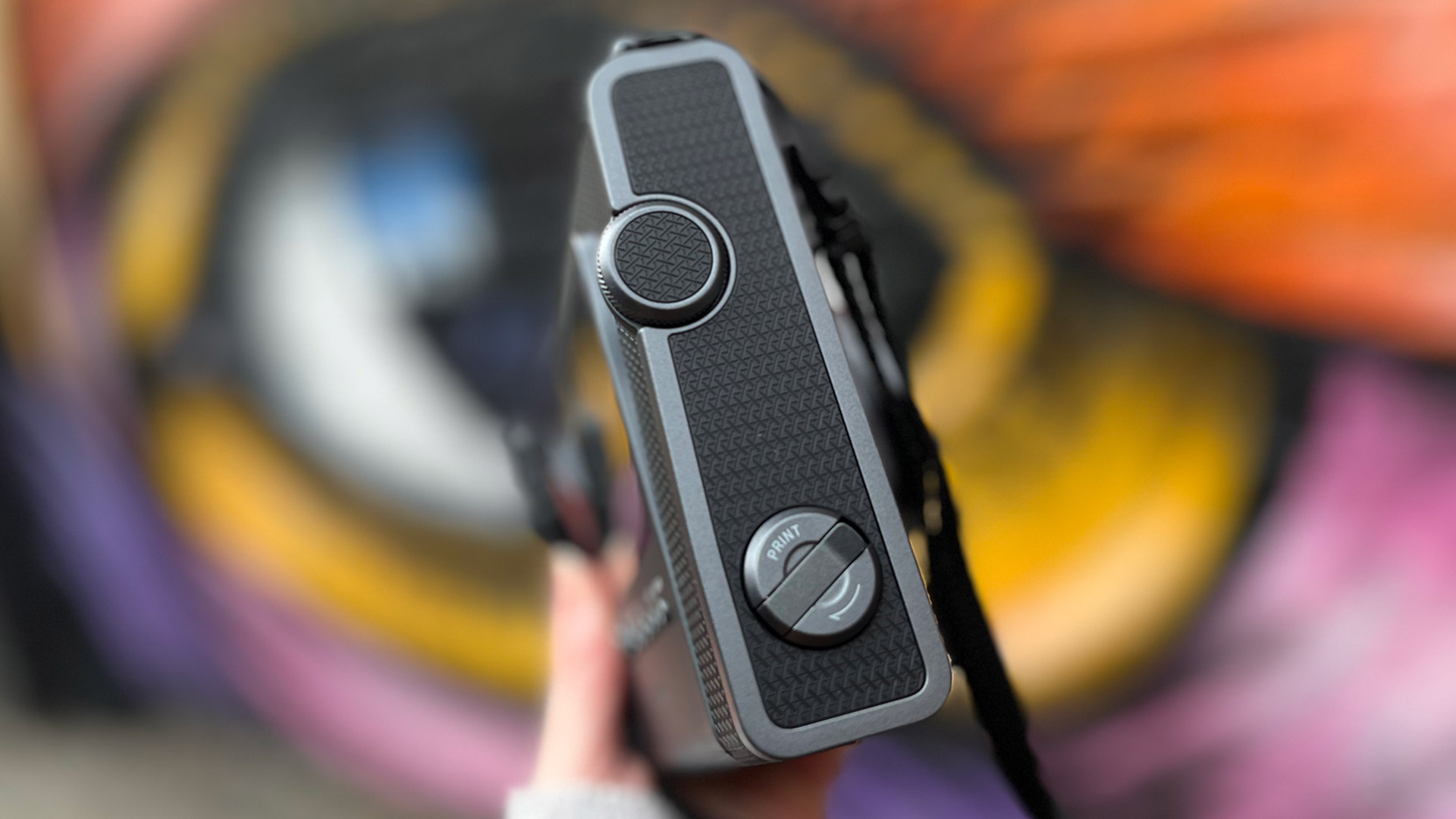
I enjoyed experimenting with the various film effects and styles thanks to the dedicated buttons. However, my favorite feature has to be the hand crank on the side, which evokes a sense of analog nostalgia.
In contrast to the Mini Evo’s standard shutter button, the Wide Evo utilizes a rocker switch located beside the lens on the front. Initially, this setup felt awkward, especially for selfies, as I struggled to engage autofocus by half-pressing.
It’s worth noting that with more practice, this may become easier, but I found it less intuitive at first. However, other controls, like the spin dials and printing crank, are very tactile and user-friendly.
Moreover, there’s an Instax Wide app that provides more basic editing features, such as cropping, adjusting brightness, and contrast, as well as a ‘Discovery Feed’ for sharing and exploring creations from other users. It’s important to note that only printed images are automatically saved in the app; photos taken with the camera won’t appear in your library until transferred from a microSD card.


